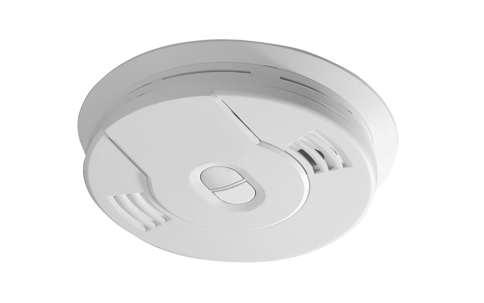Most of the food we eat has an expiration date somewhere in the label. It doesn’t necessarily mean you can’t eat it after this date, but the expiration date does tell us it’s no longer in peak condition. Smoke detectors are the same way.
Always on
These safety devices installed throughout your home are never turned off. They are continuously protecting you and your family by monitoring for smoke. How many things in your life work 24/7 for a decade? It’s a pretty amazing feat.
The most common type of smoke detectors are powered by 9-volt batteries. These devices chirp to let you know the battery must be replaced. Batteries aren’t the only things that need replacement. The National Fire Protection Association recommends that smoke detectors should be replaced every 10 years.
If you were to remove a smoke detector from where it sits on the wall or ceiling, you’ll find there are two key dates on the backside. Besides the serial number, you’ll find a manufacture date and a “Replace By” date.
Why do these devices need to be replaced every 10 years? It’s because the sensors degrade over time. They reach a point where they’re no longer dependable or effective.
Don’t be fooled by the test button
Here’s something important to remember: You can’t see that replacement date on the backside, and most detector alarms aren’t designed to tell you. They’re busy detecting smoke! It’s why performing the recommended monthly test by pressing the “TEST” button on the front of a smoke detector can literally give you a false alarm.
The reassuring chirp you hear only tells you that the battery, electronics, and the alarm are functioning. It can’t confirm that the smoke sensor is still working – and without that crucial function, a smoke detector is absolutely worthless.
Two types of smoke detectors
Why does the sensor stop working? The most common smoke detectors in our homes utilize a process called ionization. There’s a small amount of radioactive material located between two electrically charged plates. It ionizes the air and causes current to flow between those two plates. If smoke enters the chamber where those plates are located, it disrupts the flow of ions and triggers the alarm.
That radioactive material is only effective for about 10 years.
Another type of smoke detector aims a light source at an angle away from an internal sensor. If smoke enters the chamber, it reflects that light onto the sensor and triggers the alarm. These are known as photoelectric systems.
The National Fire Protection Association recommends that you use both types of smoke detectors in your home. Each is sensitive to certain types of fires.
- Ionization smoke detectors are responsive to smoke caused by flaming fires.
- Photoelectric smoke detectors are responsive to fires that begin with a long period of smoldering.
It’s time to contact us online or give us a call if you can’t remember the last time your smoke detectors were replaced. Well perform tests and help you determine which detectors are best for your home.

